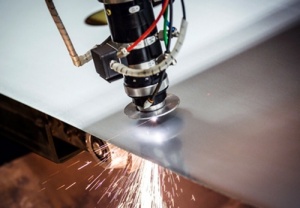Debunking Myths About U.S. Manufacturing
With public perception of manufacturing at an inflection point, research says roughly 8 in every 10 Americans view U.S. manufacturing as vital to maintaining economic prosperity. But, fewer than 5 in 10 Americans believe manufacturing jobs are interesting, rewarding, clean, safe, stable and secure. Also, fewer than 3 in 10 said they were likely to encourage their children to pursue a manufacturing career.

Manufacturing takes on its misperceptions.
The manufacturing industry is responding with a clear message: there are significant myths about manufacturing that need busting. Right now.

For many years, the public perception has been that manufacturing is dead, and the body and any belongings are being shipped overseas for disposal. It’s a service and entertainment economy anyway – American innovation is reserved for movies and smart phones, not machine tools or industry.
This could not be more wrong. Manufacturing continues to consolidate but will always remain a potent factor in this and any economy. Technological change in the means and methods of production (machine tools, tooling, materials, software and many more) is a lever that can lift entire industries into enhanced productivity and profitability.
Many manufacturers and their organizations are fighting back. The MAPI Foundation is the sister organization of the Manufacturers Alliance for Productivity and Innovation (MAPI). Its recent report, “Myth-Busting American Manufacturing,” pulls no punches. “When schoolchildren believe manufacturing is not a sound career choice, they will not consider a job in that sector,” it says. “When economists and policymakers call manufacturing irrelevant in today’s economy, they perpetuate myths that harm the sector.”

Here are the four most prominent manufacturing myths that the MAPI Foundation wants to debunk:
- U.S. manufacturing is in decline. A brief look at MAPI’s numbers easily busts this myth. If U.S. manufacturing were its own economy, it would be the seventh largest in the world. A 2016 MAPI Foundation report says the total manufacturing value chain could be as high as $5.5 trillion, about one-third of the total US economy. In addition, U.S. manufacturers produce parts for other companies across numerous international and domestic sectors.
- Manufacturing is a poor career choice. Parents and students can hardly be blamed for believing this one. Between 2000 and 2010, the manufacturing sector shed more than 5.7 million jobs, many to low-labor-cost countries. But MAPI says in an increasingly integrated global economy, the U.S. is not losing jobs to location decisions, it is gaining jobs. Labor statistics reveal that U.S.-based jobs at foreign-owned manufacturers have been steadily increasing following the 2008-2009 global recession. Manufacturing is a wise career choice for a number of reasons. Jobs are stable, showing lower turnover than non-manufacturing jobs. During the first half of 2016, manufacturers provided 65% more in benefits per hour of employee work than service industry employers.
- U.S. manufacturing isn’t needed. Simply stated, this is not true. Innovation is happening at such a quick pace that the production of research and development (R&D)-intensive capital goods cannot be done efficiently in only one country alone. The absence of the U.S. from these networks would diminish global manufacturing strength, to the detriment of global stability, and ultimately, U.S. economic stability. By many accepted metrics, including the U.S. Bureau of Economic Analysis along with MAPI Foundation data, U.S. manufacturing is a powerhouse of innovation, so much that manufacturing R&D investment has been 4-5 times greater than nonmanufacturing R&D since 2001.
- Manufacturing is unduly harmful to the environment. Smokestack industries, right? Not so much anymore. Lean manufacturing can be a key driver of the win-win relationship between profits and positive environmental outcomes. In the lean model, forecasted customer demands yield more responsive and more precise order-delivery systems. By operating in the lean environment with its higher efficiency and greater emphasis on cost-cutting, U.S. manufacturers are positively impacting their bottom line. At the same time, lean companies are cutting down on raw material consumption, energy usage, waste and pollution. More recent data from the Organization for Economic Cooperation and Development (OECD) validate a positive trend. With market incentives aligned with positive environmental outcomes, the most logical forecast is for continued environmental improvement over the long-term.
The truth is, the fastest way to bust these and many more manufacturing myths is to personally experience modern manufacturing. Watch news and community calendars and take advantage of plant tours, ribbon cuttings and Manufacturing Day events across the country. You’ll find that manufacturing is far from dirty, dull and dangerous. Rather, it’s fascinating, innovative, productive and safe, which should light a spark in future generations.
- Category:
- Industry
- Manufacturing
Some opinions expressed in this article may be those of a contributing author and not necessarily Gray.